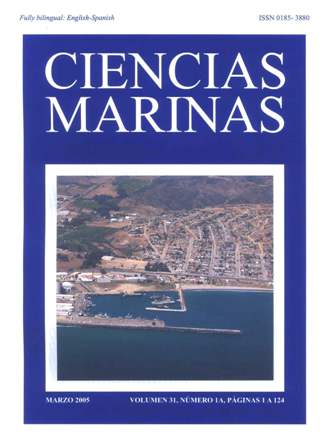Numerical simulation of the hydrodynamics of a port and effect of a wave-driven seawater pump
Main Article Content
Abstract
A three-dimensional numerical model was adapted to study the circulation, stratification and mixing patterns inside the port of El Sauzal. Salinity, temperature and density field data were measured, showing that density variations were mainly due to the temperature field with a very small contribution from salinity. The model simulated surface currents and the temperature field. The simulation was compared against field data showing that the model reproduces satisfactorily the circulation, stratification and mixing patterns. Surface circulation and vertical mixing were mainly forced by the tide, although winds greater than 6 m s–1 became the main forcing of vertical mixing and surface circulation. The surface currents traveled outside the port during ebb tide and vice versa during flood tide; however, with winds greater than 6 m s–1, the surface velocity followed the wind direction. When a discharge of 0.2 m3 s–1 was introduced into the system, the simulation showed an increase of 0.5 cm s–1 in the surface current velocity, during ebb tide. The vertical temperature structure increased as much as the discharge temperature (17.2ºC). This result verifies that a controlled discharge could improve circulation and mixing, reducing the residence time and improving the levels of oxygen in the water.
Downloads
Article Details

This work is licensed under a Creative Commons Attribution 4.0 International License.
This is an open access article distributed under a Creative Commons Attribution 4.0 License, which allows you to share and adapt the work, as long as you give appropriate credit to the original author(s) and the source, provide a link to the Creative Commons license, and indicate if changes were made. Figures, tables and other elements in the article are included in the article’s CC BY 4.0 license, unless otherwise indicated. The journal title is protected by copyrights and not subject to this license. Full license deed can be viewed here.

